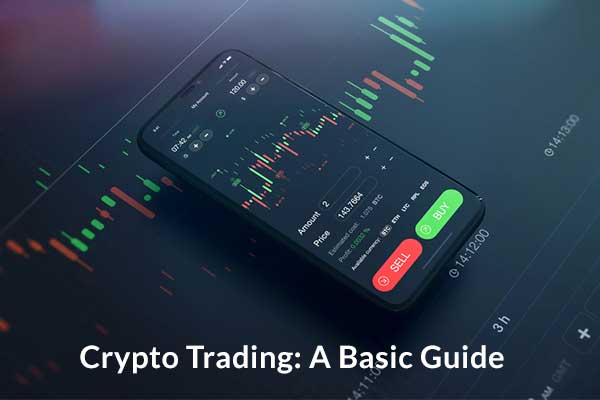If you’ve been watching the news lately, you’ve probably seen some success stories about cryptocurrencies. And if you’re like most people, you may be wondering how to get in on this action! But if you’re not familiar with crypto trading, it may seem complicated or intimidating.
When trading cryptocurrency, not only do you have to figure out how to buy and sell cryptos but there are a host of other factors involved—from choosing an exchange to keeping track of market movements such as meme coin shib tracking across multiple platforms.
In this guide, you’ll get to understand all these things so that when the time for your first trade comes, everything will be easy as pie.
How To Start Trading Crypto
You may already know how to trade stocks, but crypto exchanges are a little different. First, it’s important to note that there are two main types of exchanges: centralized and decentralized. Centralized exchanges (Cex) are ones where users deposit funds into an account and then trade against other users who have also deposited funds into their accounts at the same exchange.
Decentralized exchanges (Dex) don’t require users to create accounts or deposit funds—trading takes place directly between wallets without any middleman involved in the transaction process.
There are three main orders: market order, limit order, and stop loss/take profit orders. A market order is used when you want your coin immediately at whatever available price. A limit order allows you to only buy or sell once prices reach a specific point. And a stop loss/take profit allows investors to specify at what price they’d like their buys or sells executed if the price fluctuates beyond those points.
Types Of Cryptocurrency Exchanges
There are four types of cryptocurrency exchanges:
1. Centralized Exchanges
This is the most common type, allowing you to buy and sell cryptocurrencies directly from the exchange. They typically have high volumes of trading and a centralized database where all transactions are stored. They also have varying degrees of security, so if you’re looking for a more secure option, consider looking for decentralized or hybrid exchanges instead.
2. Decentralized Exchanges (DEXs)
This type uses a smart contract-based system that allows users to exchange one cryptocurrency for another without having to trust their funds with third parties, like in centralized exchanges (although some DEXs do store user funds on behalf of their users). You can find these trading platforms on Ethereum using noncustodial wallets such as MetaMask or Trust Wallet.
DEXs, however, don’t always offer many functions compared with other types of platforms because they don’t store any crypto assets themselves. Rather than providing direct access to traders’ crypto holdings, DEXs use smart contracts which allow peer-to-peer trades between two parties who must both agree upon terms before initiating them through their own private keys. Through an escrow service, funds are locked until both parties release them back into circulation.
3. Hybrid Exchanges
A hybrid exchange is an online platform that combines centralized aspects such as matching orders with market makers. They offer decentralized features like settlement through wallet partners without needing custody over users’ funds at any point during transaction processing.
4. Off-Exchange Trading
This is also called OTC trading due to its offline nature (it’s not done online). Off-exchange trading occurs when two parties agree upon terms through phone calls or face-to-face meetings and then complete transactions using cash at designated locations.
How To Choose A Cryptocurrency Exchange

Choosing a cryptocurrency exchange can be tricky, especially if you are new to the space. There are several factors to consider before choosing an exchange to trade on. These include reputation, selection of coins and tokens, trading pairs offered by the exchange, customer support options like phone numbers, and fees charged by the exchange.
Registering With An Exchange
This step is very important as it allows you to buy, sell and store cryptocurrencies on an exchange. The first thing you need to do when registering for an exchange provides your contact information, including your name and email address. Next, some exchanges require you to submit identification documents like a driver’s license or passport number before allowing access to their platform.
When creating your account on an exchange platform, ensure that the information you provide has been verified properly before proceeding further into buying/selling crypto assets. The goal here is always to protect against fraud. This means ensuring that nobody else can access funds stored in any accounts unless they are supposed to. If someone tries accessing these funds without permission from the owner, both parties could face criminal charges—so please take care when looking after other people’s money.
Depositing Funds Into Your Account
To deposit funds into your account, you’ll need to send them from a cryptocurrency wallet to the exchange’s deposit address. It’s important to note that not all exchanges accept deposits of all cryptocurrencies, so if you plan on trading altcoins, make sure the exchange accepts them first!
Understanding Order Types
Now that you know a thing or two about how to start crypto trading, it’s worth understanding how order types work. As highlighted earlier, there are three main types:
- Stop Order: An order to buy or sell a security at a specific price that guarantees the execution of an open position in case of a drop or increase in the price of the underlying asset. It’s used to limit possible losses by setting an automatic trigger to close positions before they get too far out of line. This can be placed at any time prior to execution based on pre-defined triggers set by traders, such as increased volatility through higher interest rates and currency fluctuations.
- Limit Order: Allows you to buy or sell at a specified price or better. It is used when you have conviction about where you think prices will go but don’t want to wait around for it to happen. In other words, this type of order sets your own “limit” on how far from current market prices you are willing to trade in.
- Market Order: Instructs your broker or exchange firm to either buy or sell immediately at whatever available price there is for that particular security.
Good Exchanges
Crypto trading has a bad reputation because of the issues with exchanges. Security concerns, issues with liquidity, usability problems, customer support issues, and high trading fees make it difficult for new traders to enter the market safely and succeed in their first few trades.
It’s important that you use an exchange that allows you to trade using your own wallet address rather than depositing funds into it first, as this will give you more control over your money and more freedom when withdrawing or depositing funds in future trades.
Conclusion
Hopefully, this guide has taught you the essential things about crypto trading. Knowing these things should help you feel more comfortable with the process, which can initially seem intimidating. But don’t worry—most traders have been there too. In any case, good luck out there!
